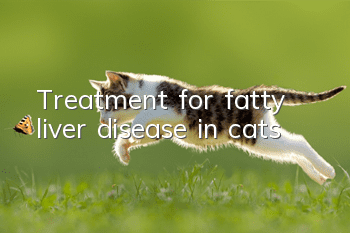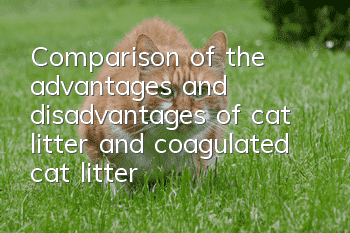Treatment for fatty liver disease in cats

Feline fatty liver is the most common disease among feline liver diseases and one of the common clinical diseases. The direct cause of this disease is anorexia, and there are many causes of anorexia, including various diseases and stress. In recent years, with the use of nasogastric feeding tubes, gastric feeding tubes and esophageal feeding tubes, the cure rate of feline fatty liver has greatly improved in mainland China. Feeding tube therapy is nutritional therapy, but drug therapy cannot be ignored in the treatment of fatty liver. .
The typical symptom of fatty liver disease in cats is that they have not eaten food in the recent period. If the cat was obese before starting to stop eating, the chance of developing fatty liver disease is very high. For cats that do not eat, the body will break down fat to provide energy, but the fat will quickly accumulate in the liver, causing liver cells to be unable to use fat. Fat is stored around liver cells, causing liver failure. Cats often exhibit jaundice, a yellowing of the conjunctiva and skin of the eyes. When jaundice occurs, if it is not treated proactively, it often leads to death.
1. Fluid treatment
Multi-ion balancing liquid is usually used. In cases of severe fatty liver, the concentration of lactic acid in a small number of cats increases abnormally, which is suspected to be caused by lactic acid metabolism disorder. Therefore, it is recommended not to use lactated Ringer's solution. Glucose is contraindicated because it reduces fatty acid oxidation, increases triglyceride accumulation in the liver, worsens glucose intolerance, and can aggravate electrolyte imbalance due to osmotic diuresis.
2. Correct electrolyte imbalance
Hypokalemia is very common in fatty liver, and it can significantly affect the cure rate. Hypokalemia is significantly related to symptoms such as lethargy, anorexia, vomiting, decreased urine concentration ability, carbohydrate intolerance, hypoventilation, drooping of the head and neck, and hepatoencephalopathy. There is still no accurate formula for calculating the body's potassium ion needs, which is usually determined based on potassium ion concentration. The rate of potassium supplementation is very critical and must be less than 0.5mmol/kg/h. Sometimes there is hypophosphatemia and hypomagnesemia, which in severe cases can cause severe clinical symptoms and require targeted treatment.
3. Control vomiting
Vomiting is one of the common symptoms during the treatment of fatty liver disease. This may be related to gastroparesis, electrolyte imbalance, feeding tube irritation and underlying diseases caused by cats not eating for a long time. The drug most commonly used to control vomiting is metoclopramide, which inhibits vomiting and promotes gastrointestinal motility. Due to the possible presence of gastroparesis, atropine, 654-2 and other drugs are prohibited. Otansilone and butorphanol are sometimes substituted. In addition, moderate exercise can also help control vomiting. When vomiting occurs, the feeding method can be changed to small amounts and multiple times, and methods such as warming the food in a water bath can be used. Many veterinarians will feed less frequently or reduce the amount of food they feed due to vomiting. According to the author's experience, regardless of whether the feeding is reduced, the number of vomiting usually does not change significantly, but when the feeding is reduced, the cat's recovery time will be significantly longer.
4. Appetite stimulants
There are currently a variety of appetite stimulants for cats, including diazepam, cyproheptadine, etc. They are recommended for cats that still have appetite, but are contraindicated for cats without appetite. Because diazepam and cyproheptadine usually have no effect on cats with no appetite, they can have serious hepatotoxic effects on individual cats.
5. Traditional Chinese Medicine Treatment
Bitter yellow has the effects of clearing away heat and dampness, soothing the liver and relieving stagnation, detoxifying, lifting yang energy, etc. It protects the liver, lowers enzymes and reduces yellowing.
6. Other drugs
Other drugs that need to be supplemented include hepatocyte growth hormone, vitamin B (anorexic cats are prone to deficiency), vitamin E (antioxidant damage), vitamin K (used when necessary to treat poor coagulation), carnitine (promoting fatty acids oxidation), taurine (cats are prone to deficiency), adenosylmethionine (antioxidant damage, synthesis of carnitine and other functions).
7. Use drugs with caution
In this disease, there are many drugs that should be used with caution and banned. Stenzol, steroids and tetracyclines all promote fat deposition; anticholinergics can cause gastrointestinal sluggishness and are not conducive to vomiting control. Vitamin K1, oxidative drugs, and propofol all cause oxidative damage and can easily cause anemia; appetite stimulants have hepatotoxic effects on a small number of cats.
8. Summary
Treatment of feline liver disease usually takes 3-4 weeks, and a few cats require more than 1 month. Excluding cases where the owner gives up treatment (cost factors, etc.), the cure rate for liver disease is extremely high (more than 95%). Since most cat liver diseases such as fatty liver are secondary, the cat's final survival is closely related to the primary disease.
- What should I do if my American shorthair cat has fleas?
- Why do cats keep opening their mouths and sticking out their tongues?
- British Shorthair female cat gill hair process
- What does it mean when a cat gently bites your hand?
- How to stop cats from scratching and biting?
- Why do Persian cats shed tears? Do you know the reasons?
- I regret owning a Bengal leopard cat
- What should I do if my cat doesn’t sleep at night? You can easily solve it by learning this trick!
- Can pregnant cats eat catnip?
- Analysis of ingredients of cat food and dog food



